11 checks to make before your classic’s first spring drive
With warmer weather finally arriving in many parts of the country, spring driving season is once again upon us. This article originally published in 2020, but these checks were as relevant then as they are today. Here’s to many more miles this year! –Ed.
If you’re reading this, you almost certainly have a non-daily-driven enthusiast car somewhere in a locked garage. It’s time to unlock the door, let that puppy out, fire it up, and drive it.
But you need to check a few things first.
I assume that the car has been sitting over the winter—say, three to six months. If the car’s been sitting for years instead of months, you get into a whole other level of issues like bad gas, clogged fuel lines, corroded cooling-system components, and failed brake and clutch hydraulic seals. But for a season’s sit, the list below should be pretty good.
Enabling the rollout
The cars that I store offsite are in rented, traditional, one-car-per-roll-up-garage-bay spaces and thus can be brought out at a moment’s notice, but at my house I have a shoebox-proportioned garage with a single door into which four cars are stuffed in two rows, nose-to-tail.
The car immediately behind the door can be pulled out easily, and the one behind that (on the mid-rise lift) is next in line, but the other two are typically blocked in by a winter’s worth of tools and parts.
Once that Maginot Line is cleared, I need to slide a car to the right on wheel dollies. This turns my space from a four-car, winter garage to a three-car, three-season garage, which it remains until first snow. It also means that one formerly garaged car must go somewhere, creating a chain reaction that sets off a shuffle in the other places where I store cars.

Tires
If, when you roll open the garage door for the first time in months, one of your car’s tires is wheel-on-the-cement flat, you kind of have to start with the tires, so let’s. Obviously, if that’s the case, you need to air that tire up before you can move the car. If you don’t have an air compressor in the garage, buy a portable one that runs off the cigarette-lighter socket, or better yet, runs off 12V DC or a 120VAC adapter.
I’ll air up the tire and then see what it’s going to do. If you immediately hear it hissing from a puncture or a bad valve stem, then you need to stop everything, jack up the car, pull the wheel off, and either swap on another wheel and tire or get this one fixed. But if you don’t, you can see whether the leak deflates the tire over hours or days. Just remember that it deflated over the winter, so it’s going to do it again.
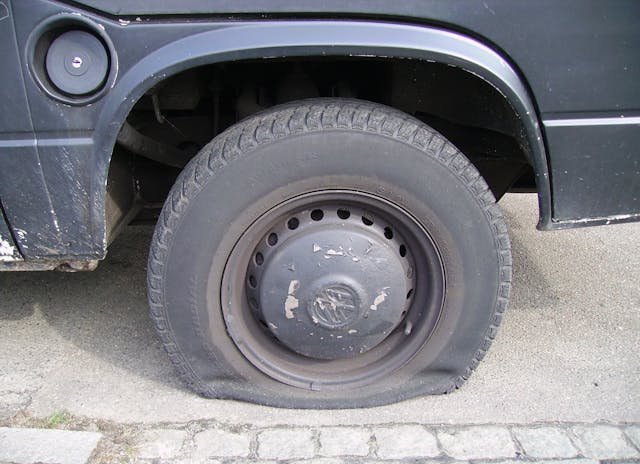
Then, check the air pressure of all four tires. While you’re doing that, it’s a good idea to inspect the tire sidewalls for cracking. Odds are that if the car is stored indoors, the tires aren’t going to get much worse over a single winter, but it’s easy for 10 years to go by one winter at a time and the tires to cross from old-but-OK to sheeh-I-don’t-want-to-drive-farther-than-to-the-gas-station-on-those.
Battery
We’ll come back to the battery in cranking (below), but here’s where I talk about what you should’ve done when you put the car away last fall. If the battery has been on a tender or trickle-charger for the winter, it’s probably fine. Since I store several of my cars in a remote garage without electricity, I can’t trickle-charge them, so instead I simply unhook the negative battery terminal over the winter. Most of the time, when I reconnect it three or four or six months later, the engine turns right over.
But if you didn’t do either of these things, you’ll probably have a problem.
You can take a multimeter, set it to measure voltage, and put the two probes on the battery terminals. If it reads 12.6 volts, or near it, the battery is fully charged, and if it’s in good health and the cable connections are good, it should turn the engine over. But with every 0.2-volt drop, the battery loses about 25 percent of its cranking power, so if it’s reading closer to 12 volts than 12.6, it’s is unlikely to crank the engine over without being connected to a good three-stage charger for several hours. So measure the battery’s voltage, and if you need to charge it, charge it.
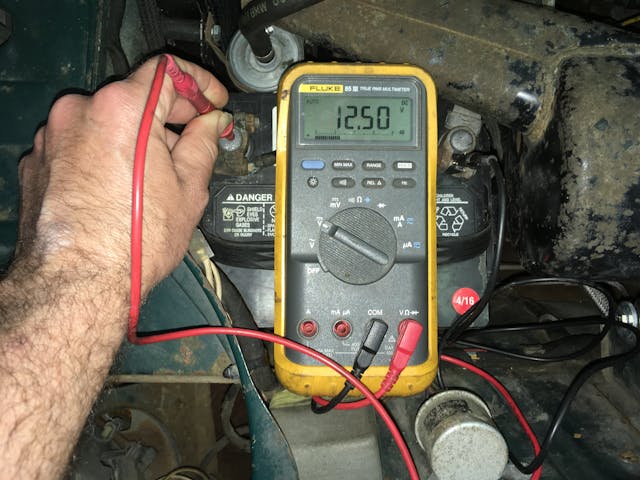
Fluids inside
Check the oil, coolant, and brake fluid levels. I’m pretty bad at keeping track of which car had an oil change when, so I do it more by the seat of my pants. If the oil looks black, I make a note to change it soon. I give a quick look inside the radiator or expansion tank to both check the level and see if there’s any oil in there indicating a weakening head gasket.
Fluids outside
Next, look under the engine compartment for evidence of leaks. Hopefully all you find is a few dots of oil from where the car’s been leaking out the front timing cover for the last 40 years and nothing more.
Anything green is antifreeze, and its source should be identified before you drive the car, as a minor leak can quickly mushroom into a gusher. Blue liquid can be either antifreeze or washer fluid. Clear liquids are usually power steering or brake fluid. I’m not above doing the pinky-in-the-fluid-and-tongue-touch-to-the-pinky test (antifreeze is sickly sweet), but I’m old and cannot be easily killed.
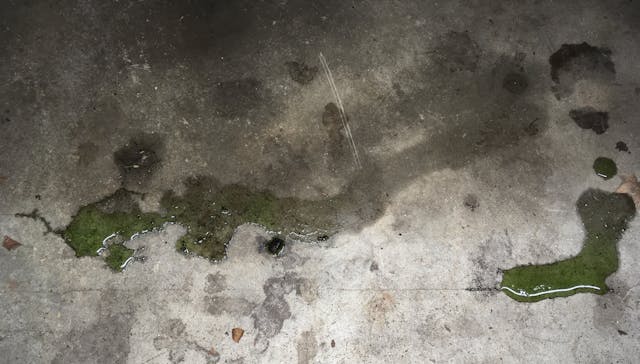
Move to the back of the car where the fuel tank is, schooch under, look, and sniff. Vintage cars have metal fuel tanks, and they can leak from age, particularly with ethanol’s propensity for attracting water. Since it’s good practice to store a car with a full tank of gas (this eliminates the chance for humid air to get into the tank and contaminate the gas with water), if you find the tank leaking, it ruins your day, since you now need to drain it. Gas can also leak from rotted or cracked rubber fuel lines.
Gasoline isn’t like oil or antifreeze; there should be a zero-tolerance policy for any amount of fuel leakage. You should also sniff in the engine compartment to be certain gas isn’t leaking there.
The critter check
If your garage has an affinity for rodents and they’ve made your car home, they can deposit a lot of material in the air cleaner in a short amount of time. It’s good insurance to pop the top off the air cleaner and have a quick look.
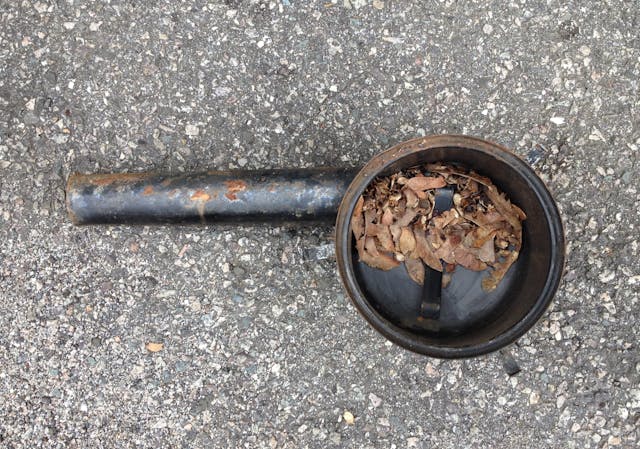
Hoses and belts
Give the hoses and belts a quick inspection. Squeeze the hoses. If any of them are pillowy soft, order replacements. Inspect the belts for cracks and cuts and put a thumb on each of them to check the tension. If they’re obviously loose, take a moment and tighten them.
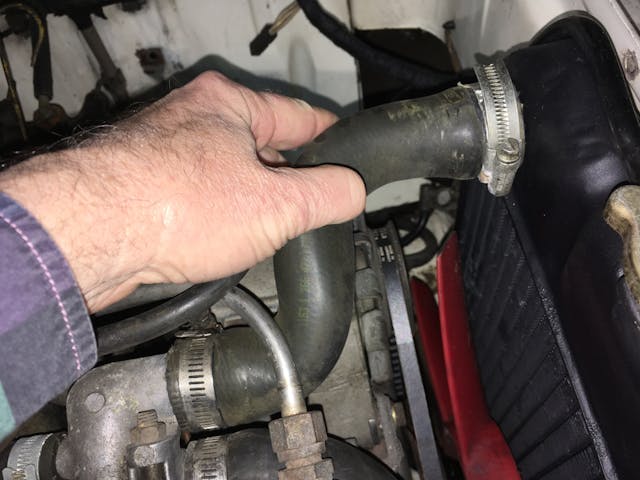
The crank-over
If the car has passed the above checks, the engine is ready to be cranked. As I said above, if the battery is fully charged and registering about 12.6 volts, it should crank when you turn the key. If it doesn’t crank, clean the battery and cable terminals and try again.
If the voltage is a little low, you can jump-start the car, but if the battery is deeply drained (turn the key and you get a click of the starter but that’s all), or worse, flatlined (less than 10.5 volts, or the car’s dash lights barely even turn on), it’s best to replace it before you drive the car. Alternators aren’t designed to charge deeply discharged batteries. Although old analog cars often don’t seem to mind, post-OBDII cars with a proliferation of electronic control modules can do very odd things, including bucking and dying, if a deeply discharged battery is jump-started and the car is driven.
If the car is fuel-injected, it will likely start in just a few seconds when the starter is cranked. If it doesn’t, the fuel pump may not be running, either due to a popped fuse, stuck relay, or the pump itself.
Carbureted cars often take much longer to start due to the lower fuel pump pressure, the need to refill the float bowls, the far less precise air/fuel metering, and the lack of direct spray into the cylinders. A short blast of starting fluid into the carburetor throat can coax the engine to life. If a carbureted car still won’t start after sitting, the problem is often that an old fuel line has become dry-rotted and is sucking air rather than fuel.
The eyeballs-on idle
Once the engine is running, let it idle for about a minute. Then shut it off and look under the engine for any fluid dripping or streaming out.
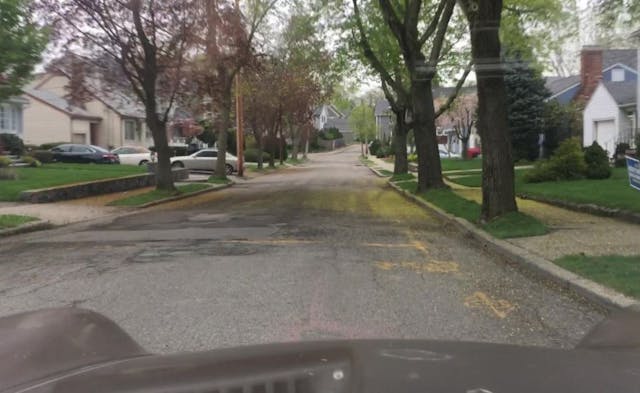
Twice around the block
It’s common for brake pads to stick to rotors from sitting. If the car has been stored indoors, the rotors probably won’t have rusted much, but still you want to scope it out. Take the car for an easy lap around the block. Brake gently to verify that the brake pedal is firm and functional, then more firmly. Pick up speed and do it again. Note any brake-pedal shudder (pulsation), pulling to one side, or steering-wheel shimmy. Pull back into the driveway and check again for any fluid leakage.

A real test drive
Take the car up onto the highway or other road where you can build speed. Verify that it comes up to operating temperature in about the middle of the gauge and stays there. Continue to test the brakes for shuddering or pulling. If the brake pedal is still pulsating, there are still unwiped deposits on it. A series of hard braking exercises (first verifying that no one is behind you) may wipe the rotors clean, or you may find that it doesn’t go away and you need to buy new rotors.
If there’s steering-wheel shimmy that wasn’t there in the fall, it’s likely the tires are flat-spotted from sitting. It may go away. It may not. Come home, recheck for fluid leakage, and check again the next morning.
If the car passes these tests, I feel pretty good about thinking that it’s in about the same condition it was in when put away in the fall and I’m ready to begin to enjoy it in the spring. But keep in mind that successfully emerging from storage doesn’t mean that the car has been healed of any known problems. Cars are not biological systems; they don’t mend themselves with a good long sleep.
***
Rob Siegel has been writing the column The Hack Mechanic™ for BMW CCA Roundel magazine for 34 years and is the author of five automotive books. His new book, Resurrecting Bertha: Buying back our wedding car after 26 years in storage, is available on Amazon, as are his other books, like Ran When Parked. You can order personally inscribed copies here.
Check out the Hagerty Media homepage so you don’t miss a single story, or better yet, bookmark it. To get our best stories delivered right to your inbox, subscribe to our newsletters.
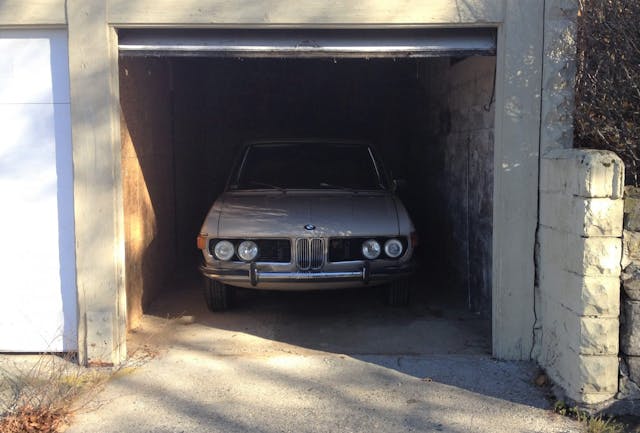
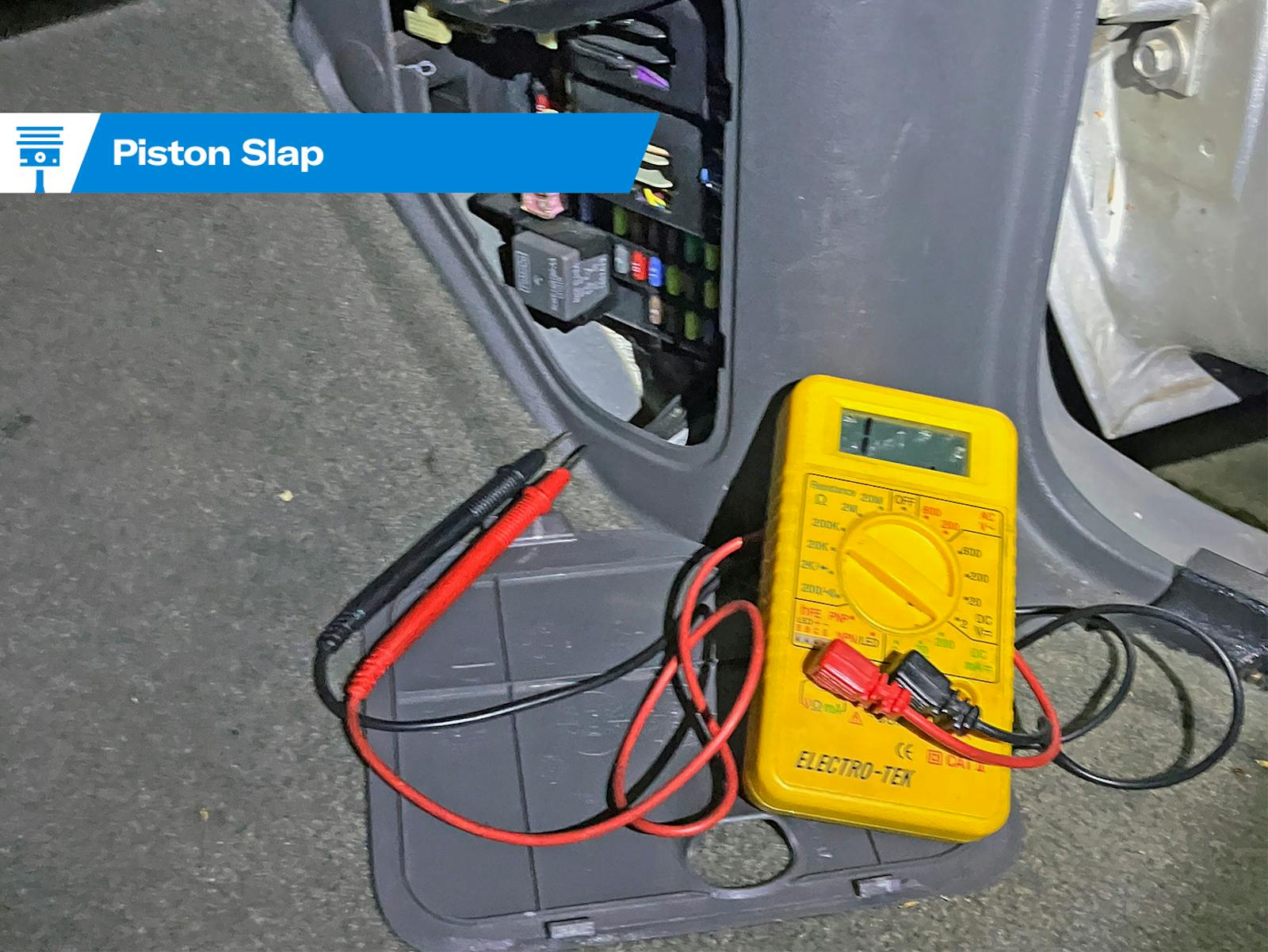

Never use starting fluid to start a car.
I disagree. Never use it to start a DIESEL, but it’s highly effective in coaxing cars to start and run the fuel pump fast enough to fill the float bowl.
Not sure why a gasoline or propane vehicle shouldn’t get any ether starting fluid, but diesels may be started with the aid of a little ether (not a big slug of it). Unfortunately, many people think they are trying to RUN the diesel on ether, not using it as only a cylinder-warming starting aid, so a lot of engines have been damaged over the years.
“Never” is a word I personally rarely use.
-Ken
Muh 6-volt positive ground pickup.
check battery with a load tester! not a volt meter! its all about the amps
Check battery with a voltmeter. If it’s substantially below 12.6 volts, charge it. If it won’t crank the starter over, THEN test it with a load tester.
Ah, yep!
I own a 1977 Corvette and this is great information. Thanks for your knowledge.
When it comes time to start my GTO after its Michigan winter slumber, I check the oil & antifreeze levels, put the key in and fire it up. Then, if it has brakes, go for a ride.
Anyone pulling Distributors or jacking it up to test brakes is way overdoing it after just a few months of down time. Remember, these cars were just daily drivers back then. They don’t need handled with kid gloves if they are maintained properly.
FYI – I haven’t lost the brakes ever and haven’t lost a cam since my 1981 engine rebuild.
I had trouble starting my 71 MGB for a while. I was using starter fluid and my mechanic advised me to not use it. He suggested carb cleaner which is less volatile and easier on the engine
I eventually tracked the problem down to a cracked fuel line which slowly siphoned fuel out of the carburetor when it sat between drives and made the first start after sitting a day or two difficult.
Nice job with the first start of the year Rob. I’ve had one classic for 50 years and another for 40. There is always something to repair and pre checking them saves a lot of tow bills and helps rider’s safety. Thank you for the tips,
I always remove the spark plugs, and having installed the batteries (fresh off their monitors), crank until the oil pressure is up. Plugs back in, and away they go, I’ve never had a problem this way. They are all stored with a fresh oil change regardless of the mileage driven during the summer–cheap insurance for engine health I think.
Yep, good one
Since many vehicles in storage don’t have access to 120 volt power, they won’t be able to have their batteries recharged from a big three-stage charger/jump starter. My usual method of jump-starting another vehicle is to park the running vehicle within reach of the dead vehicle’s battery (or remove the battery and bring it to the runner), shut off the engine, connect the jumper cables, then restart the runner engine and charge the dead battery for about five minutes. After that, shut off the runner engine and try to start the dead one. I don’t try starting a dead vehicle from a running engine because the current (amps) inrush is about 10 times the alternator output, and doing so has burned out an alternator and a voltage regulator in my past.
When first starting out, I press the brake pedal firmly for at least 10 seconds before putting the vehicle in gear and moving even an inch. I have had no brakes at all a couple of times in my past, and I can really do without that excitement.
Finally, exhausts can get packed from rodents. Have a fire extinguisher handy when first starting out!
A good one to check , is all electrical systems , lights, fans,radio and charging system. Rodents love to chew on wires. I have a motorcycle a 1966 Puch 250. I have chased many a mouse out of its toolbox. The mice eat the wiring in there. I replace the pvc wiring with mil spec Teflon coated wires. The dang mice ate through it too! I am going to use flat braid to armor the wires next!
Anyone use Bell Performance – Ethanol Defense? I bought a 32 oz. bottle for $28 at Amazon this fall. Haven’t used it yet. I can buy 90 octane ethanol free gasoline at a nearby station, but wanted to try Ethanol Defense when on the road and stuck pumping regular gas.
First point says to move stuff out of the way before you take the car out of the garage. I never would have thought if that. Thanks Haggerty!
My two cars that I store through the winter are relatively late model cars, a 2012 CTS-V and a 2016 Stage 3 Roush Mustang convertible. This has been my routines ever since I’ve owned the Caddy (9 years).
In the fall before storing the cars.
1. Fill the tank and add fuel stabilizer
2. drive the car for a few miles to ensure that the treated fuel makes it’s way to the fuel rails and injectors.
3. just before storing I will over inflate the tires to about 40-45 psi to help minimize flat spots. It won’t eliminate them, but hopefully minimize them. They usually work themselves out in the spring after driving them a bit (over course after bringing them back to the recommended PSI.
4. To help deter rodents I put dryer sheets in the engine bay, especially around the wiring harnesses, in the interior, trunk and in the tail pipes. Some people use mothballs, but that smell stays in the car.
5. Connect a battery tender.
6. install the car cover
7. set a couple of mouse traps under the cars.
In the spring it’s pretty much a reverse of the above.
1. Remember to remove the traps and check for leakage
2. Uncover the car (obviously)
3. Remove all the dryer sheets.
3. Set the tire pressure to recommended PSI
4. Detach the battery tender
5. Start the car, let it idle for a few minutes to ensure that the engine oil has circulated.
6. Take a short drive to get the rest of the fluids circulated and to operating temperature
7. Another visual all around.
Lastly, not sure if this is true, but I remember hearing that fuel stabilizer lowers the octane level of the fuel, which is especially an issue on boosted cars (like both the V and the Roush). So just to be safe I keep the engine out of boost until I burn through that first tank of gas (which doesn’t take much with those two cars), just to be safe.
Again, my cars are later models and may not be as sleepy as classics after a long 4-5 month rest.
Thanks for being part of all car enthusiasts. I am glad you send this check list out , as we know were all drivers, some with basic to no knowledge mechanically and your pointers to routine pre drive list will keep all our automobile gems from incident.
Thanks